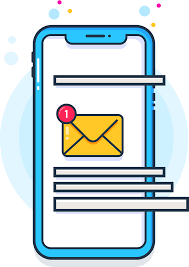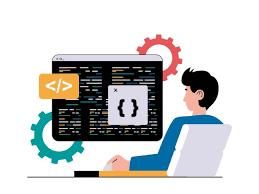
Mobile App Development
iOS and Android: These are the two dominant mobile operating systems. iOS apps are developed using Swift or Objective-C, while Android apps are typically developed using Java or Kotlin. Cross-platform frameworks like React Native and Flutter have gained popularity for building apps that can run on both platforms.
Development Process:
- Ideation and Planning: Define the purpose, features, and target audience for the app. Create a detailed plan outlining functionality, design, and user experience.
- Design: Develop wireframes and design the user interface (UI) and user experience (UX) to ensure a visually appealing and user-friendly app.
- Development: Write the code, implement features, and integrate third-party APIs if needed. Follow best coding practices and consider scalability and performance.
- Testing: Conduct thorough testing to identify and fix bugs, ensuring the app functions smoothly across different devices and scenarios.
- Deployment: Release the app on the respective app stores (Apple App Store for iOS, Google Play Store for Android).
Key Technologies:
- Programming Languages: Swift and Objective-C for iOS, Java and Kotlin for Android. Cross-platform frameworks include React Native (JavaScript/React) and Flutter (Dart).
- Backend Development: Mobile apps often require a backend for data storage, user authentication, and other functionalities. Common backend technologies include Node.js, Django, Ruby on Rails, and Firebase.
User Interface (UI) and User Experience (UX):
- Design a visually appealing and intuitive UI/UX to enhance user satisfaction. Consider navigation, layout, color schemes, and interactive elements.
Security:
- Implement secure coding practices to protect user data and prevent unauthorized access. Use encryption, secure APIs, and follow best practices for authentication.
Performance Optimization:
- Optimize app performance to ensure fast load times and responsiveness. Compress images, minimize network requests, and implement caching strategies.
Maintenance and Updates:
- Regularly update the app to fix bugs, add new features, and adapt to changes in operating systems or device capabilities.
Monetization Strategies:
- Explore different monetization models such as freemium, in-app purchases, subscriptions, or advertising.
App Marketing:
- Develop a marketing strategy to promote the app, including app store optimization (ASO), social media promotion, and other advertising channels.
Feedback and Iteration:
- Collect user feedback and analytics to understand user behavior. Iterate on the app based on insights gained to improve user satisfaction and address any issues.
Categories
No Data!
Recent Posts
No Data!




